Polestar 3 review: A full-size electric SUV with impressive range
Spacious, stylish and enjoyable to drive, the 3 is a full-size SUV from Swedish EV startup Polestar that comes well-equipped, charges quickly and promises over 350 miles of range
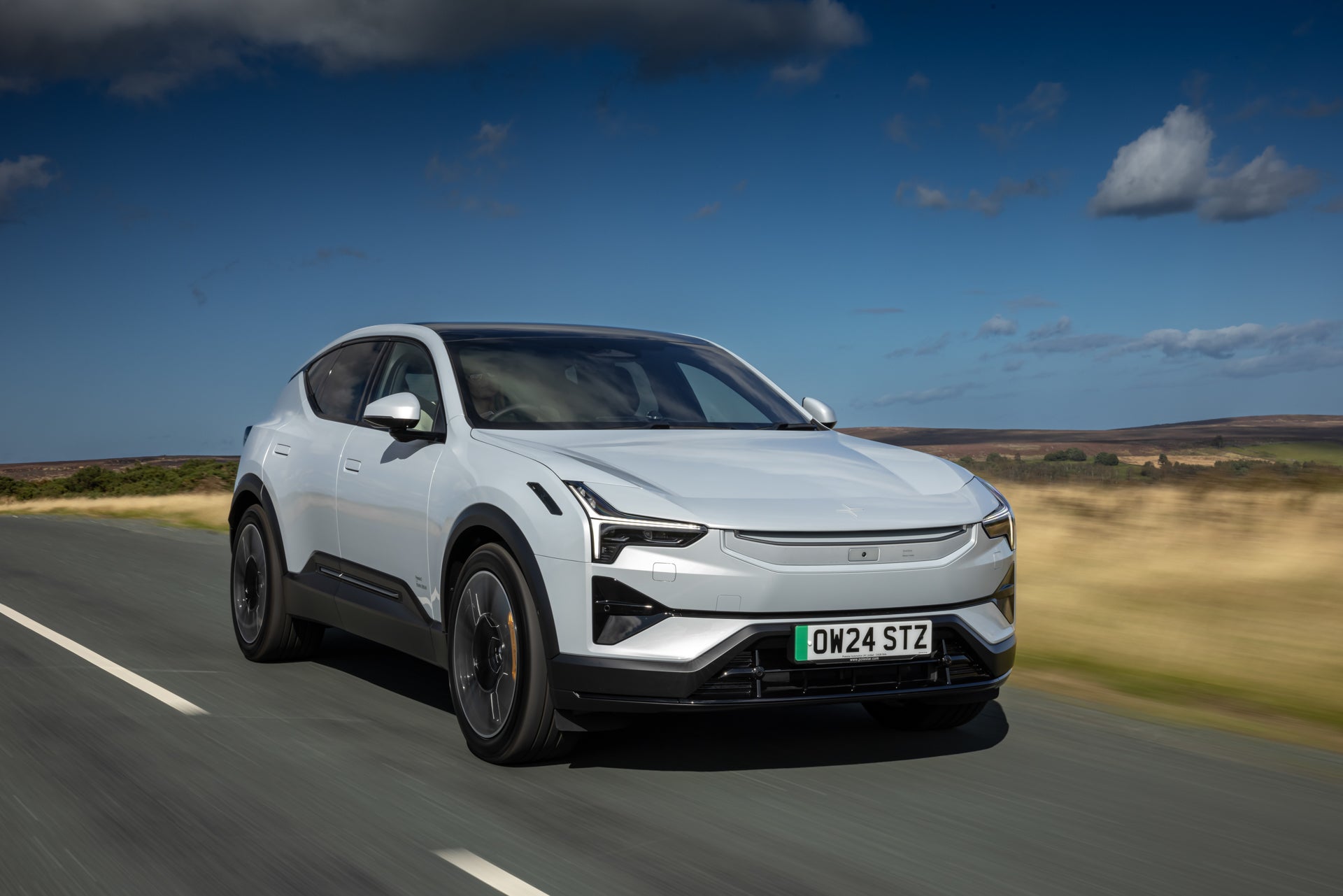
Your support helps us to tell the story
From reproductive rights to climate change to Big Tech, The Independent is on the ground when the story is developing. Whether it's investigating the financials of Elon Musk's pro-Trump PAC or producing our latest documentary, 'The A Word', which shines a light on the American women fighting for reproductive rights, we know how important it is to parse out the facts from the messaging.
At such a critical moment in US history, we need reporters on the ground. Your donation allows us to keep sending journalists to speak to both sides of the story.
The Independent is trusted by Americans across the entire political spectrum. And unlike many other quality news outlets, we choose not to lock Americans out of our reporting and analysis with paywalls. We believe quality journalism should be available to everyone, paid for by those who can afford it.
Your support makes all the difference.The Polestar 3 is a full-size SUV with a big battery and, if you’re gentle on the accelerator, a real-world range closing in on 350 miles. It also benefits from fast charging, a roomy and stylish interior packed with kit as standard, and an on-road poise that will please keen drivers. It’s not a sports car by any stretch of the imagination – and you’re best off buying the least powerful model in return for maximum range – but the 3 goes well and feels composed, even nimble, for its size. It also rides much better than the stiffly-sprung Polestar 2, which is particularly apparent on UK roads.
Polestar’s interior tech is among the best, but some buyers might be frustrated by the lack of physical controls for the cabin temperature and mirror adjustment, while others will admire the clean and tidy Android interface. Optional extras are bundled into packs, which can make things expensive (especially if you just want the excellent Bowers & Wilkins stereo with Dolby Atmos), but the 3 still feels like good value compared to rivals from the better-known German brands.
How we tested
I’ve driven the Polestar 3 on three seraparte occasions, including several hours in the UK and Spain, plus a day of drifting across a frozen lake in Swedish Lapland to learn about its clever torque-vectoring system. The UK route took in much of the Cotswolds and included towns and villages, plus country roads and some motorway.
Polestar 3: From £69,900, Polestar.com
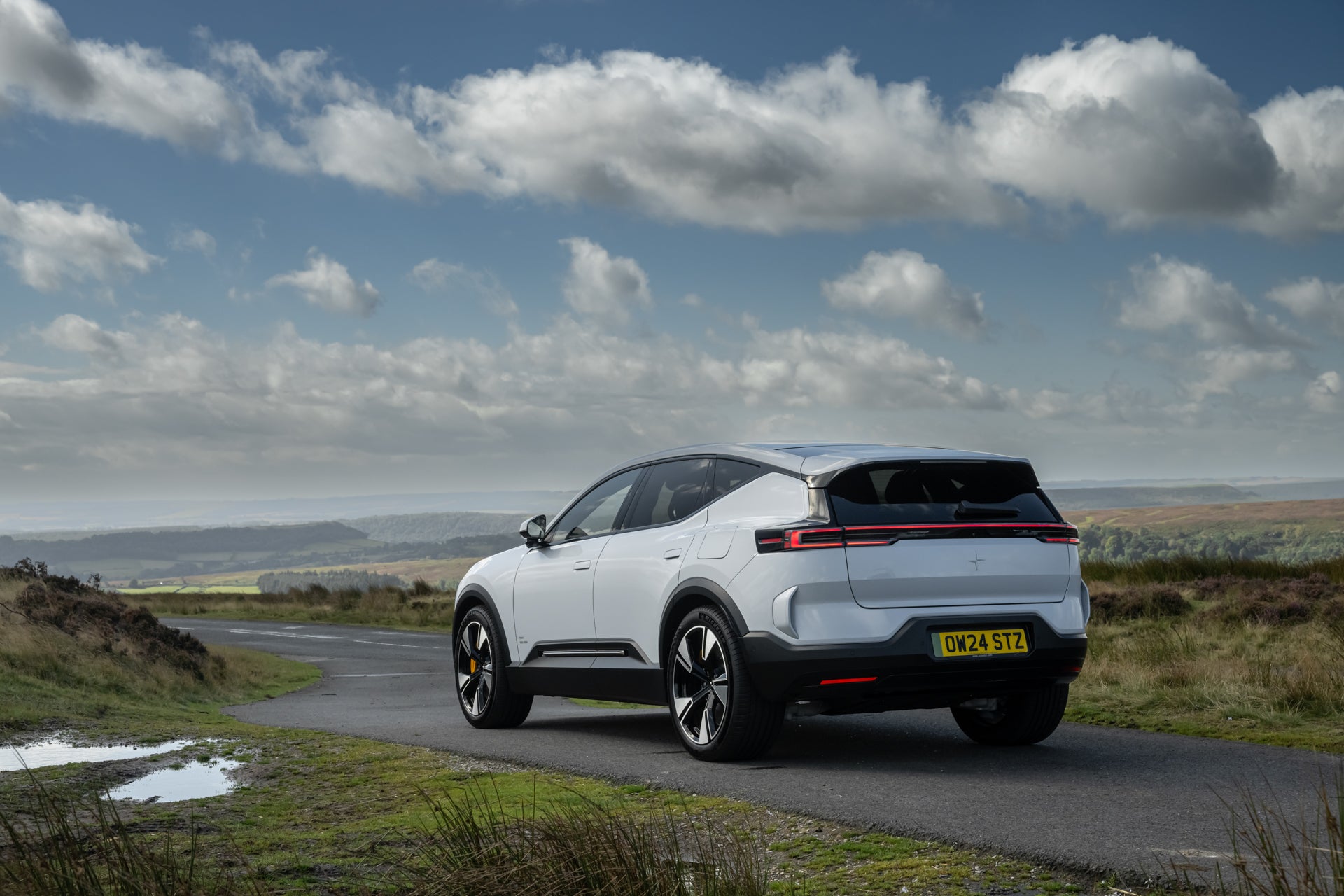
Independent rating: 8/10
- Pros: Fun to drive, rides well, spacious interior, lots of kit fitted as standard
- Cons: Lack of physical controls can be annoying, no seven-seat option
- Price range: £69,900 to £81,900
- Battery size: 111 kWh
- Maximum claimed range: 403 miles
- Miles per kWh: 3.3
- Maximum charging rate: 250 kW
Battery, range, charging, performance and drive
Polestar’s biggest car yet, the 3 is a full-size SUV with an equally large 111 kWh battery pack. The long-range, single-motor Polestar 3 has the greatest range, at a claimed 403 miles, the least power (still a plentiful 295 bhp is sent to the rear wheels) and a 0-60 mph time of 7.5 seconds. The mid-range model has two motors for a total output of 482 bhp, a range of 392 miles and a 0-60 mph time of 4.8 seconds. The flagship Polestar 3 Performance has 510 bhp and hits 60 mph in 4.5 seconds, but has the shortest range, at 348 miles. To learn more about the electric cars that go the furthest, check out our guide to the EVs with the longest range – which includes both the Polestar 2 and 3.
All three variants of the Polestar 3 have an impressive maximum charge rate of 250 kW, and when connected to an equally powerful charge they’ll fill from 10 to 80 percent in 30 minutes, or from zero to full in 11 hours using a home charger.
Interior, practicality and boot space
The Polestar 3’s cavernous interior has seating for five (not seven, unfortunately) and is a masterclass in minimalism. Volvo fans will recognise some of the switchgear, which is no bad thing, and the 3 is fitted with recycled ‘WeaveTech’ fabric as standard. Nappa leather is available as an upgrade with the Pilot and Plus packs; the latter also includes active noise cancelling to reduce road noise, a head-up display, heated rear seats (on the fronts are heated as standard) and an upgraded sound system.
Rear leg room is especially impressive and the materials used match the up-market price tag of the 3. However, the sloping roof line robs rear headroom and at 484 litres the boot is fine but not particularly impressive for a car this big. A 32-litre frunk under the bonnet is big enough to store your charge cables but little else. We love the panoramic glass roof and the airiness it brings to the cabin.
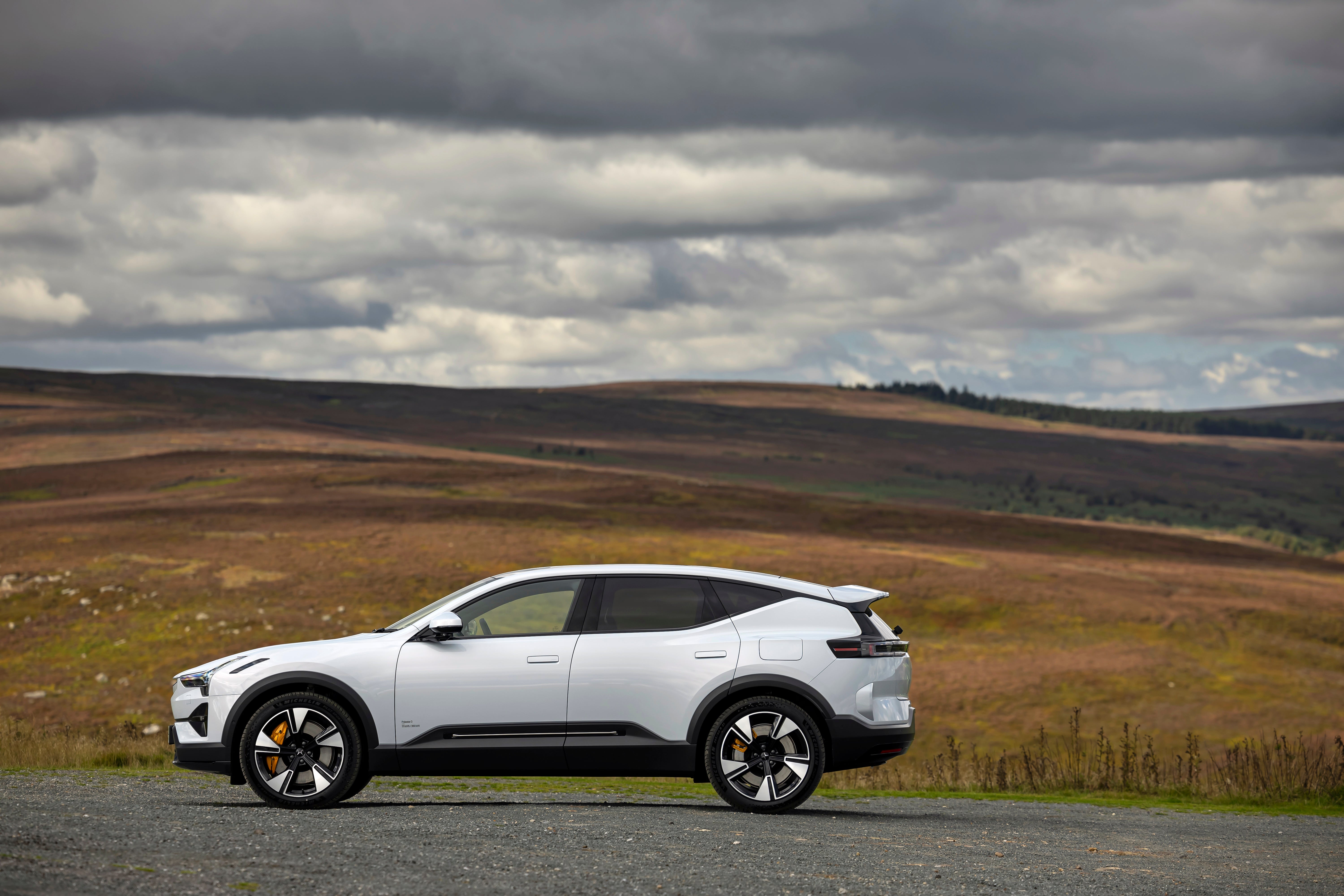
Technology, stereo and infotainment
Polestar’s minimalist approach to interior design means everything is on the huge, 14.5-inch touchscreen. This includes temperature controls, and even the wing mirrors can only be adjusted by diving into the touchscreen then fiddling with buttons on the steering wheel. It can be infuriating to the unfamiliar – and never stops being annoying when you want to adjust a mirror while parking – but the operating system is otherwise clean, responsive and fairly intuitive.
It’s an Android Automotive system, so just log in with your Google credentials and you have access to Google Maps, Google Assistant, the Play store and other apps like Spotify too, which streams music over the car’s 5G connection. The driver gets their own 9-inch display for speed, gear, battery percentage and local speed limits, plus directions for the navigation system. We much prefer this two-screen approach to cars with a single, central display like the Tesla Model 3 and Volvo EX30.
The Polestar 3 has a 10-speaker, 30-watt sound system as standard, but we recommend upgrading to the 25-speaker, 1,610-watt system by Bowers & Wilkins, which boasts 3D Surround Sound and Dolby Atmos. Feed it some high-quality tracks (ideally through Tidal) and it’s seriously impressive. Annoyingly, that upgrade is only available if you pay for both the Pilot and Plus packs, which increases the total price by £7,300.
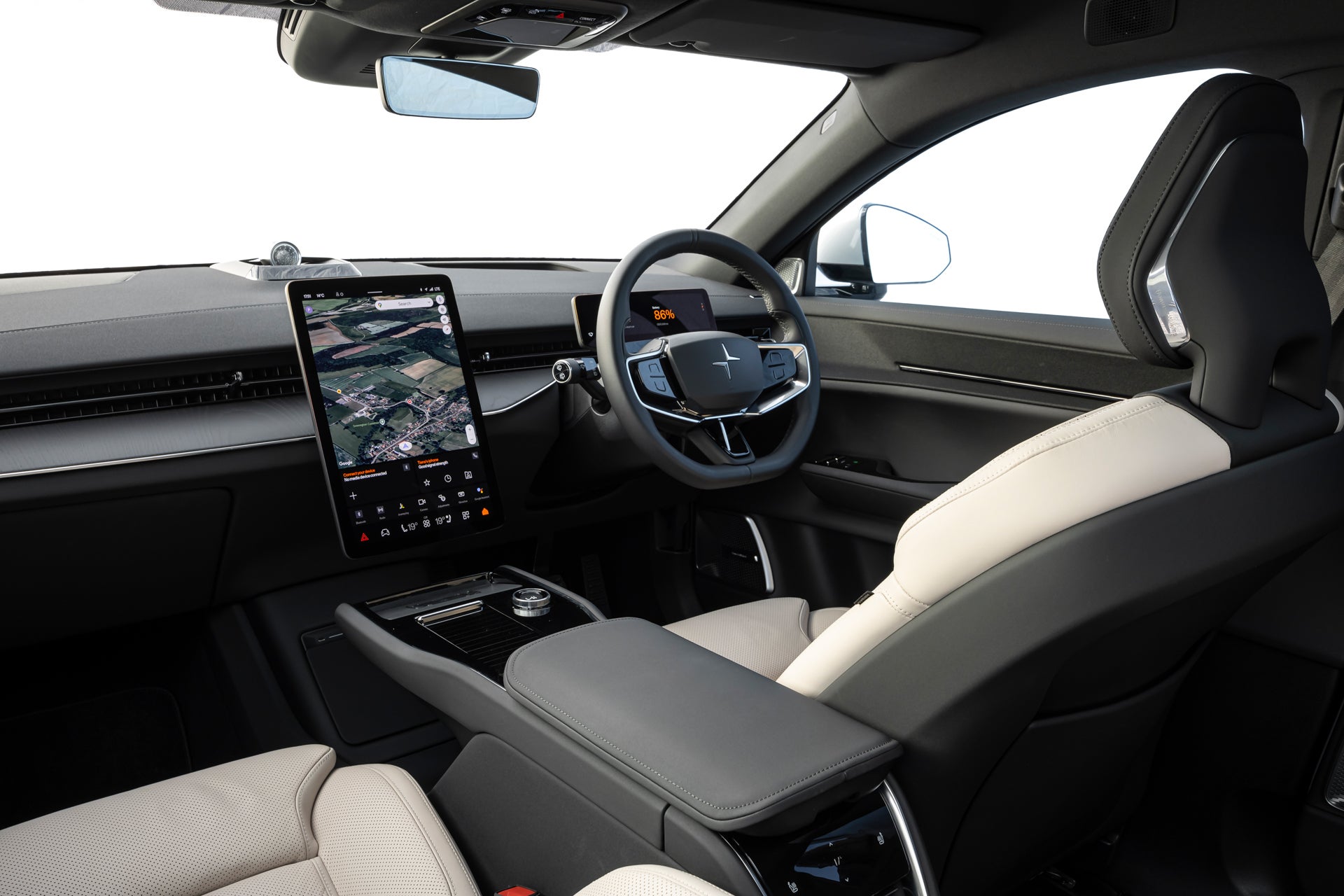
Prices and running costs
Even at £70,000 or £80,000, the Polestar 3 feels like good value compared to some of its equally-large rivals. It isn’t the most efficient EV around, but the circa-three miles per kWh we saw while driving means 300 miles could just about be possible. Fill the battery cheaply at home (and ideally at a reduced rate during the night) and running costs will be much lower than an equivalent sized petrol or hybrid car.
Be careful with high-speed public chargers, though. They are expensive, and since it can fill its very large battery at up to 250 kW, the Polestar 3 could land you with a surprisingly big charging bill in just a few minutes. Make sure you don’t leave it plugged into an expensive charger for any longer than you really need.
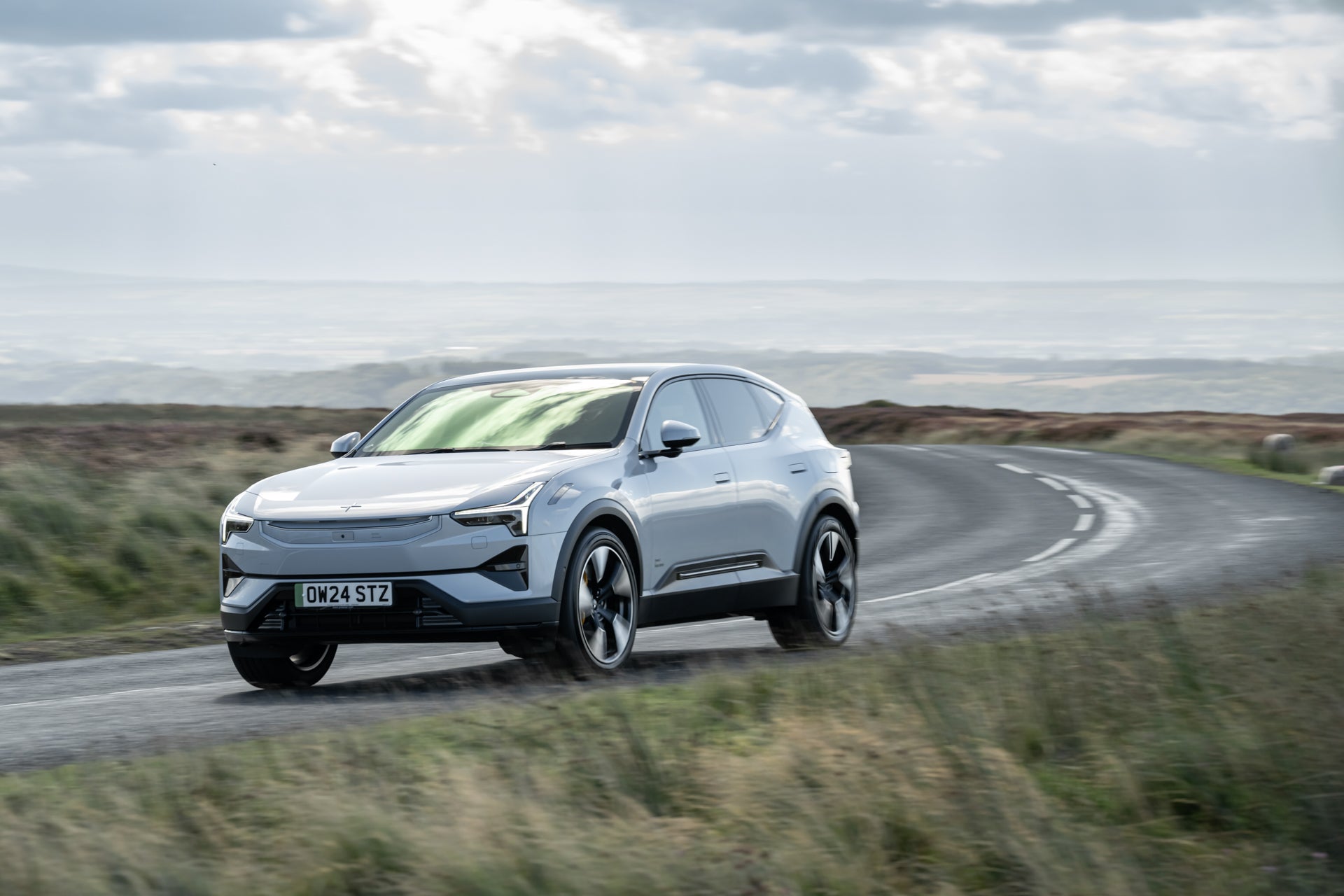
Polestar 3 rivals:
FAQs
How long does it take to charge?
Even though the Polestar 3 has a big battery, its maximum charge rate of 250 kW means it can fill from 10 to 80 percent in as little as 30 minutes, when you use an equally powerful charger. Plug into a wallbox charger at home, and to fill the battery from almost empty will take about 11 hours.
How much does it cost - is it worth it?
Starting at £69,990, this is the most expensive Polestar yet, But when you remember that it’s a full-size SUV with strong performance, good range, fast charging and a premium interior, that starts to seem like good value. That said, adding on Polestar’s optional extras can get expensive, and we’d avoid the increased power of the Performance pack in favour of more range.
Does Polestar replace batteries for free?
Polestar includes battery warranty for eight years or 100,000 miles, whichever comes first. This covers faults in battery performance, such as if the state-of-health of the battery falls below 70 percent of its original capacity. If that happens, Polestar says it will replace the battery at no cost.
The verdict: Polestar 3
I’ve had a soft spot for Polestar ever since the Swedish startup arrived in 2020. Its largest car yet upholds the brand’s reputation for smart design, a minimal interior with clever tech and driving enjoyment.



Join our commenting forum
Join thought-provoking conversations, follow other Independent readers and see their replies
Comments